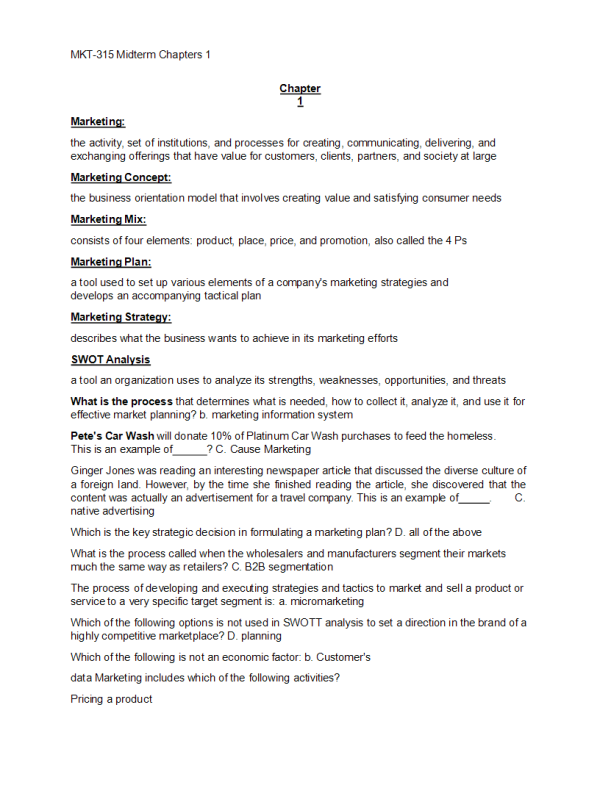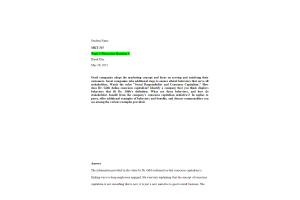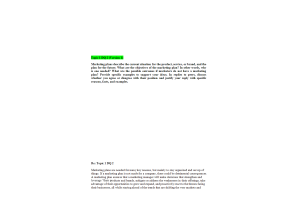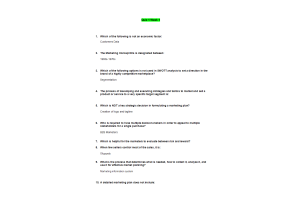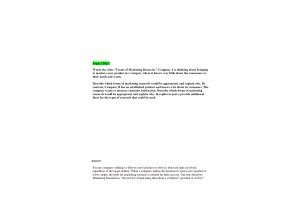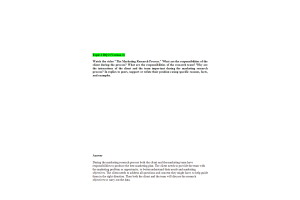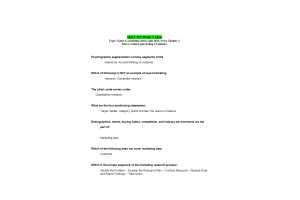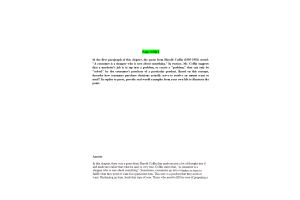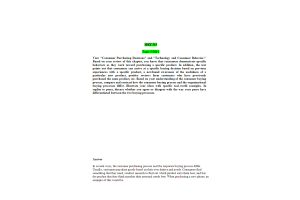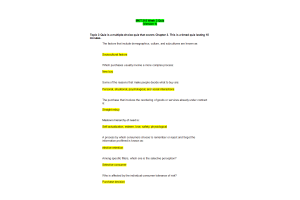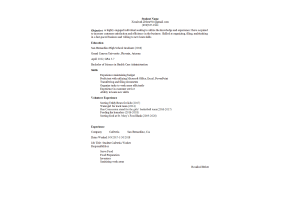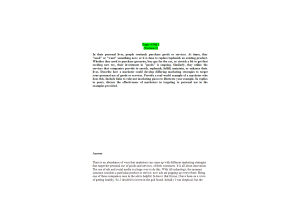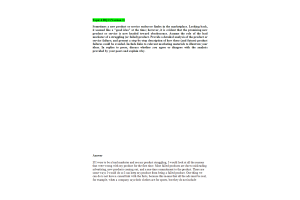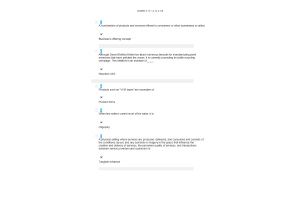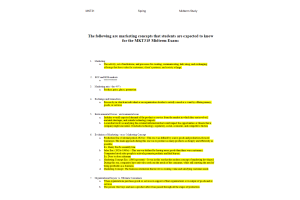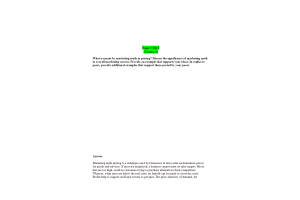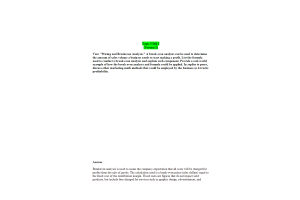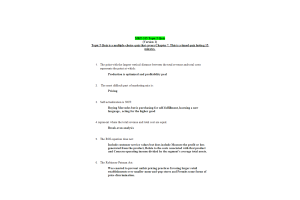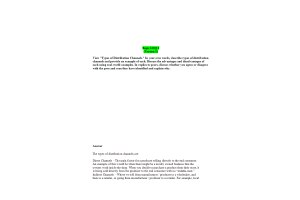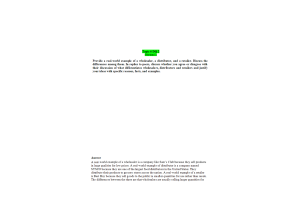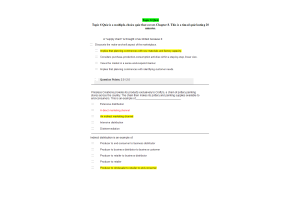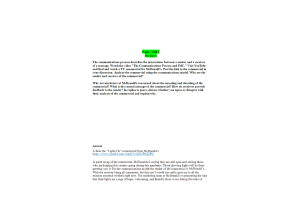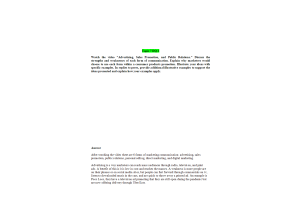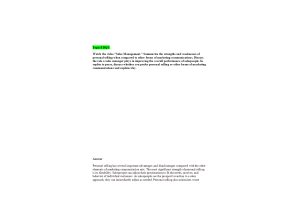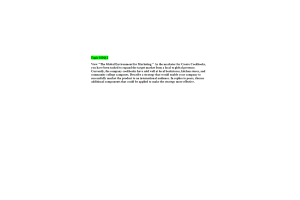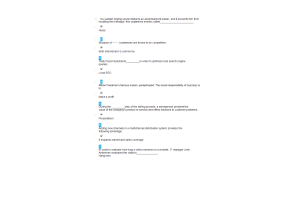MKT 315 Topic 4 Midterm Chapters 1 - 4
- $29.00
- Marketing:
- Marketing Concept:
- Marketing Mix:
- Marketing Plan:
- Marketing Strategy:
- SWOT Analysis
- What is the process that determines what is needed, how to collect it, analyze it, and use it for effective market planning?
- Pete's Car Wash will donate 10% of Platinum Car Wash purchases to feed the homeless. This is an example of ?
- Ginger Jones was reading an interesting newspaper article that discussed the diverse culture of a foreign land. However, by the time she finished reading the article, she discovered that the content was actually an advertisement for a travel company. This is an example of .
- Which is the key strategic decision in formulating a marketing plan?
- What is the process called when the wholesalers and manufacturers segment their markets much the same way as retailers? C.
- The process of developing and executing strategies and tactics to market and sell a product or service to a very specific target segment is:
- Which of the following options is not used in SWOTT analysis to set a direction in the brand of a highly competitive marketplace?
- Which of the following is not an economic factor:
- Data Marketing includes which of the following activities?
- Pricing a product
- What is the process called when the wholesalers and manufacturers segment their markets much the same way as retailers?
- Which is NOT a key strategic decision in formulating a marketing plan?
- Which of the following key perspectives is not considered while performing the situation analysis?
- The Marketing Concept Era is designated between:
- Who is required to have multiple decision-makers in order to appeal to multiple stakeholders for a single purchase?
- Government regulations, suppliers, competitors, the economy, business trends, finances, and the weather are?
- In the late 1990s, which of the following was third place in the minds and wallets of worldwide consumers?
- The process of developing and executing strategies and tactics to market and sell a product or service to a very specific target segment is:
- When few sellers control most of the sales, it is:
- Which of the following options is not used in SWOTT analysis to set a direction in the brand of a highly competitive marketplace?
- Which of the following refers to specific, measurable, achievable, relevant, and timely, and pertains to formulation of organizational objectives that are clear and measurable?
- The process of gathering information about events and their relationships within an organization's internal and external environment is:
- Which of the options below enables marketers to understand when they have achieved the goals of success throughout the plan, and allows them to quickly recognize areas that may be off-track in order to resolve them?
- A detailed marketing plan does not include:
- What is the process that determines what is needed, how to collect it, analyze it, and use it for effective market planning?
- Which is helpful for the marketers to evaluate between risk and reward?
- Social factors include:
- Which of the following is not an economic factor:
Chapert 2
- Examples of neuromarketing research are:
- What is market segmentation?
- What are Marketing Objectives/strategies?
- What does brand development index (BDI) represent:
- What relates to how above average or how below average sales are compared to the population demo?
- What measures the number of cases, units or dollar volume of a brand sold per 1000 population percentage?
- what is the outcome of high BDI and high CDI?
- what is the outcome of high CDI and low BDI?
- what is the outcome of low CDI and high BDi?
- what is the outcome of low CDI and low BDI?
- What is effective frequency?
- what is effective reach?
- what is offensive advertising?
- what does the Ostrow's approach say?
- what is the definition of geographic weighting?
- what is the definition of continuity advertising scheduling strategy, and why would someone use it?
- what is the definition of flighting advertising scheduling strategy, and why would someone use it?
- what is the definition of pulsing advertising scheduling strategy, an why would someone use it?
- what is the definition of index numbers?
- what is the one main point that underlies all the reasons when to advertise?
- When do you for sure emphasize frequency in an ad campaign?
- What are the four positioning statements:
- Which of the following does not cover marketing data:
- Which is the proper sequence of the marketing research process:
- Which marketing intelligence issue relates to whether a brand is distributed nationally or regionally?
- Demographics, trends, buying habits, competition, and industry environments are the part of:
- Psychographic segmentation narrows segments of the market by:
- Geographic segmentation narrows the market by:
- The likert scale comes under:
- map is a tool for visualizing:
- Secondary Data:
- Primary Data:
- Gatekeeper Technologies:
- Information Research Process:
- Scientific Method:
- Knowledge:
- Situational Analysis:
- Unit of Analysis:
- Analysis:
- Competitive considerations:
- Exploratory Research:
- Descriptive Research:
- Casual Research:
- Target Population:
- Target Audience:
- Census:
- Sample:
- Research proposal:
- Location:
- Geography questions:
- Index Numbers:
Chapter 3
- Who is affected by the individual consumer tolerance of risk?
- What are the factors Influencing Consumer Behavior Economic Factor:
- Which purchases usually involve a more complex process?
- Maslow's hierarchy of needs is:
- The purchase that involves the reordering of goods or services already under contract is: Straight rebuy Among specific filters, which one is the selective perception?
- Recent reports show that 85 % of consumers report that they trust online reviews left by other consumers as much as personal recommendations.
- Some of the reasons that make people decide what to buy are:
- The factors that include demographics, culture, and subcultures are known as:
- A process by which consumers choose to remember or reject and forget the information proffered is known as:
- consumer market:
- business market:
- undifferentiated targeting strategy:
- homogeneous market:
- heterogeneous market:
- market segmentation:
- market segment:
- concentrated targeting strategy:
- differentiated targeting strategy:
- segmentation variables:
- market density:
- geodemographic segmentation:
- Micromarketing:
- benefit segmentation:
- market potential:
- company sales potential:
- buildup approach:
- trend analysis:
- time series analysis:
- cycle analysis:
- seasonal analysis:
- consumer Behavior:
- want Motivation:
- Perception:
- environmental factors:
- straight rebuy:
- new buy:
- modified rebuy:
- organizational buying demand:
Chapter 4
- Customer Insights
- Marketing Research
- Exploratory Research
- Descriptive Research
- Causal Research
- Secondary Data
- Primary Data
- Observational Research
- Ethnographic Research
- Survey Research
- Experimental Research
- Focus Group Interviewing
- Online Marketing Research
- Online Focus Groups
- Sample
